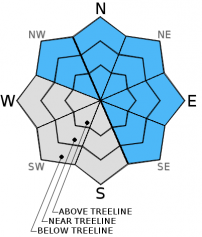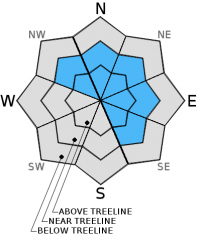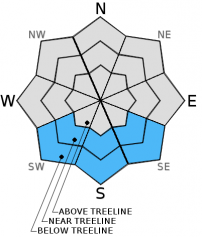| Thursday | Thursday Night | Friday | |
|---|---|---|---|
| Weather: | Mostly cloudy with snow showers in the morning becoming partly cloudy with scattered snow in the afternoon | Mostly cloudy with scattered snow showers in the evening then isolated snow showers after midnight | Partly cloudy |
| Temperatures: | 32 to 38 deg. F. | 16 to 23 deg. F. | 32 to 39 deg. F. |
| Mid Slope Winds: | Southwest | West shifting to the northwest after midnight | Northeast |
| Wind Speed: | 25 to 35 mph with gusts to 50 mph | 25 to 30 mph with gusts to 45 mph decreasing to 15 to 20 mph with gusts to 30 mph after midnight | 20 to 25 mph with gusts to 35 mph increasing to 30 to 35 mph with gusts to 50 mph in the afternoon |
| Expected snowfall: | up to 2 | up to 1 | 0 |
| Thursday | Thursday Night | Friday | |
|---|---|---|---|
| Weather: | Mostly cloudy with snow showers in the morning becoming partly cloudy with scattered snow in the afternoon | Mostly cloudy with scattered snow showers in the evening then isolated snow showers after midnight | Partly cloudy |
| Temperatures: | 28 to 34 deg. F. | 13 to 20 deg. F. | 31 to 37 deg. F. |
| Ridge Top Winds: | Southwest | West shifting to the northwest after midnight | Northeast |
| Wind Speed: | 55 to 60 mph with gusts to 80 mph decreasing to 40 to 45 mph with gusts to 70 mph in the afternoon | 40 to 45 mph with gusts to 70 mph decreasing to 25 to 30 mph with gusts to 45 mph after midnight | 35 to 40 mph with gusts to 60 mph increasing to 45 to 50 mph with gusts to 70 mph in the afternoon |
| Expected snowfall: | up to 2 | up to 1 | 0 |



























